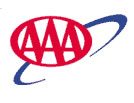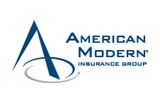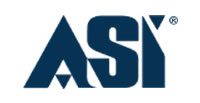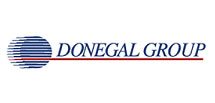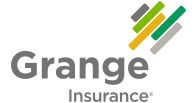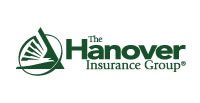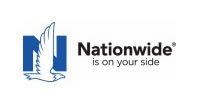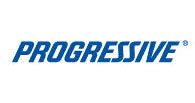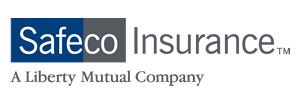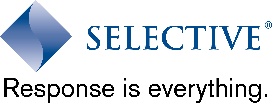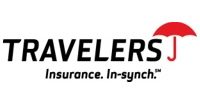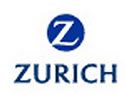Frequently Asked Questions
Auto Insurance
Accident With A Borrowed Car: Whose Policy Pays?
If you lend your car to a friend and your friend has an accident, it might be your insurance that’s on the hook. It all depends on the insurance company that issued your policy. One company’s policy may state: “the insurance follows the car”; while another company’s policy says the driver’s insurance is the primary coverage even though you own the vehicle involved.
Let’s take a look at the two different scenarios:
- If the insurance follows the car and you lend your car to a friend, your coverage is considered the primary coverage. If your friend has an accident, it’s your insurance that will pay the claim. If the accident is serious enough to use up all of your policy’s coverage, then your friend’s coverage, which is considered secondary, might also be used.
- If the insurance follows the driver, coverage is provided the other way around. If you lend your car to a friend and they have an accident, it’s their policy that is considered primary coverage, meaning their insurance company will pay the claim. In this case, your policy would be secondary and wouldn’t pay for anything unless your friend’s policy limits were used up.All these rules go out the window in many cases if the person borrowing the car happens to be a relative who resides in the same household as the owner. You should read your policy carefully to see what type of coverage applies to you.
Remember these two things: First, always exercise caution when it comes to lending your car. Second, if you’re ever in doubt about whether you or another driver is covered in any given situation, please call us.
Rental Cars: Should You Purchase Rental Agency Coverage?
Your policy may provide some coverage for damage to the rented vehicle. However, your rental agreement may hold you responsible for items not covered by the personal auto insurance policy such as:
- Daily rental rate for the days that the vehicle can’t be rented due to being repaired
- Depreciated value of the auto after the repairs
- Administrative fees charged by the rental car agency.
Our agency recommends that you do purchase the “collision deductible waiver” offered by the rental car agency AND make sure to comply with the rental agreement requirements!
What To Do After An Accident
You’ve been in an accident. Here are some general guidelines about what to do next:
- Stop at once. Never leave the scene of even a MINOR accident. Do not block the roadway if at all possible.
- Seek medical assistance and summon police.
- Do not admit fault. Do not comment about the accident to anyone but your insurance representative and the police. Never accept or make an offer of cash, check or “private” settlement.
- Gather accident information. Note the date and time of accident.
- Obtain information on the other driver including: name, address, phone number, make of car, vehicle license number, insurance company and agent’s name and telephone number.
- Record a description of what occurred.
- Draw a diagram of the accident showing the direction of both cars and the point of the accident. Include street names and location of traffic signs/signals.
- Report the accident promptly to your insurance agent.
Lease Loan Gap Coverage
If you are thinking about leasing or buying a car, you might consider adding Lease Loan Gap (LLG) Coverage to your auto policy. LLG Coverage is an extension of your auto’s physical damage coverage.
Ordinarily, your comprehensive and collision coverages provide you with up to the actual cash value (the vehicle’s cost minus depreciation) in the event of a total loss. When you sign a lease or loan agreement, you may be obligating yourself for an amount higher than the vehicle’s actual cash value.
At a cost of approximately 5% of your current comprehensive and collision premiums, LLG Coverage protects you from out-of-pocket expense when such a “gap” occurs. Although there are some limitations (such as a percentage cap on the amount of gap coverage provided) LLG Coverage may pay up to your lease or loan amount if your car is stolen or if the cost of repairs is greater than its salvage value. Contact our office and we’d be happy to discuss this coverage further.
Note: Some car manufacturers may provide gap coverage as part of the lease agreement — check your particular contract for details.
New Car Selection: Safety Counts
The Insurance Institute for Highway Safety has published a shopping guide for those wanting to buy a new car based upon safety features. While the guide does provide specific car lists (from station wagons to sports cars) it also reveals some overall safety basics to keep in mind.
Vehicle size – Quite simply, bigger means safer. According to the shopping guide, “People in small vehicles are injured more often and more severely than those in large vehicles.” In relation to their number on the road, small vehicles account for more than twice as many occupant deaths as large vehicles. Small sport utility vehicles have the highest death rates of all, in part because of their greater involvement in fatal rollover crashes. “While utility vehicles and passenger vans might go head-to-head in a popularity contest, passenger vans have good on-the-road crash experience — similar to that of station wagons.”
Air bags – Serving as a buffer between vehicle interiors and occupants’ heads and faces, air bags provide automatic protection in frontal crashes. The Institute advises that although “the speed and force of air bag inflation may occasionally cause minor injuries such as abrasions, this slight risk is far outweighed by the benefits.” This type of injury can be reduced by selecting a seat position that is not too close to the steering wheel.
Safety belts – Remember, the more comfortable the safety belt, the more likely you are to always use it. Even though shoulder belts allow some forward movement, automatic crash tensioners and/or belt webbing grabbers can reduce the chance of an occupant hitting the steering wheel or dashboard in a serious frontal crash.
Antilock brakes – Especially designed to avoid skidding and loss of control, antilock brakes automatically pump several times a second. Drivers need to become familiar with the difference in braking style as antilocks require heavy braking pressure to activate this safety feature.
Head restraints – Required in the front seats of all new passenger vehicles, head restraints prevent occupants’ heads from snapping back in a rear-end crash. Look for a fixed head restraint or an adjustable restraint that is designed to protect tall and short people even in the “down” position. Avoid a poorly-designed adjustable restraint that would only protect the shortest occupants.
Built-in child seats – Several cars and vans offer built-in child safety seats as options.
Uninsured Motorist Coverage: Do I Really Need It?
You’re driving your son to soccer practice when you are rear-ended at a stop sign. Dealing with the initial trauma of the accident and injuries and the subsequent disruption of a period of medical recovery and the inconvenience of car repairs is bad enough. What if the injuries are serious? And what if the at-fault driver has no insurance? Where do you turn?
This is where your Uninsured Motorists (UM) Coverage comes into play.
What is the difference between Uninsured and Underinsured Motorists Coverage? Underinsured Motorists Coverage covers you and passengers in your car for “losses unpaid because sufficient bodily injury liability limits are not available from the policy of an at-fault driver.” In other words, Uninsured Motorists covers you if the wrongdoer has no insurance while Underinsured Motorists covers you in the event that the wrongdoer has some coverage but not enough.
Many people wonder if UM is really necessary. After all, isn’t liability insurance mandatory? How can there be any uninsured drivers out there? The problem is not everyone obeys the law. The Insurance Information Institute shows on their web site, www.iii.org, that an estimated 12% of drivers in Georgia in 2007 were uninsured.
Others question the necessity of UM in light of the fact they have very comprehensive medical coverage. In the event of an accident with an uninsured driver, they assume their own medical coverage will fully protect them. Yes, medical insurance would likely cover most medical expenses. But it will not generally compensate the injured person for lost wages, disfigurement, pain and suffering, mental anguish, and changes in quality of life. For a person permanently disabled following an accident, even things such as modifications to make a home and a vehicle more accessible can cost tens of thousands of dollars. UM can compensate the victim in these broader areas.
There are ways insurance dollars can be saved, but paring down or going without UM is one we strongly discourage.
Uninsured Motorist Property Damage Coverage
It is estimated that one out of every 20 motorists is driving uninsured. Although this figure represents only 5% of today’s drivers, uninsured motorists are responsible for approximately 13% of all auto accidents. If you become involved in an accident with an at-fault driver of an uninsured motor vehicle there are coverage options available to ensure that you are adequately protected:
- UMBI- Uninsured Motorists Bodily Injury Coverage provides bodily injury coverage for you and for the occupants of your vehicle. Most policies already provide this coverage.
- UMPD- Uninsured Motorists Property Damage provides coverage for your vehicle. Vehicles without collision coverage have no protection for damage resulting from an accident with an uninsured driver. If the optional UMPD coverage is added to your policy and you find yourself tangled in an accident with the at-fault driver having no insurance, you won’t be left to pay for the damage to your car out of your own pocket.
Please contact us if you want to check into how your particular company’s UMPD coverages are structured and priced.

